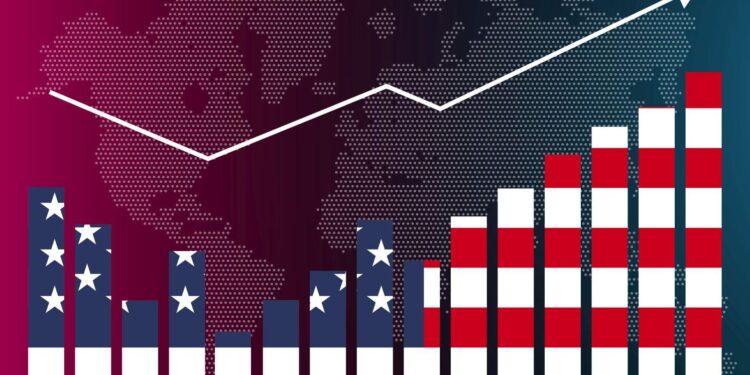The U.S. economy is showing significant signs of distress, as recent data reveals a troubling slowdown in growth and mounting challenges across key sectors. Rising inflation, labor market uncertainties, and supply chain disruptions are contributing to an increasingly precarious financial landscape. In this report, Washington Monthly examines the factors driving the economic stumble and explores the potential implications for policymakers and American households alike.
Economic Growth Slows Amid Rising Inflation and Supply Chain Disruptions
Recent economic data reveal a troubling deceleration in growth, driven predominantly by persistent inflationary pressures and ongoing supply chain inefficiencies. Consumer prices have surged beyond initial forecasts, forcing households to tighten budgets as essentials become more expensive. Meanwhile, businesses grapple with inventory shortages and shipping delays, snarling production timelines and eroding profit margins. These factors combined have led to diminished consumer confidence and restrained spending, signaling a fragile outlook for the coming quarters.
Key sectors feeling the pinch include manufacturing, retail, and transportation, all critical to maintaining economic momentum. Notably, the disruptions are unevenly distributed, with smaller enterprises facing steeper challenges due to less buffer against rising costs. Stakeholders are calling for targeted policy interventions to stabilize prices and streamline supply logistics. The following table summarizes recent economic indicators highlighting the slowdown:
| Indicator | Current Value | Change (YoY) |
|---|---|---|
| Inflation Rate | 7.4% | +2.1% |
| Manufacturing PMI | 48.3 | -5.2 |
| Consumer Confidence Index | 92.1 | -8.6 |
| Supply Chain Disruption Index | 37.5 | +4.8 |
- Inflation: Sharp increase in core consumer goods
- Supply Delays: Average shipping times up by 15%
- Labor Shortages: Pressuring production capacity
- Consumer Spending: Slowing down amid rising costs
Federal Policy Responses Struggle to Stabilize Markets and Support Households
Despite vigorous efforts from federal authorities, recent policy measures have had limited success in calming the volatile markets and providing tangible relief to struggling American households. While interest rate adjustments and targeted stimulus packages aimed to curb inflationary pressures and boost consumer confidence, the complex economic landscape has exposed significant gaps between policy intentions and real-world outcomes. Key sectors-from housing to consumer goods-continue to experience price shocks, leaving many families squeezed by rising costs despite government interventions.
Several challenges have hampered the effectiveness of these initiatives:
- Inflation Persistence: Elevated prices for essentials such as food and energy remain stubborn, diluting wage gains.
- Labor Market Disparities: Job growth is uneven, with many lower-income workers facing stagnant wages and limited job security.
- Supply Chain Disruptions: Ongoing bottlenecks exacerbate product shortages and contribute to price volatility.
| Policy Action | Primary Goal | Measured Impact |
|---|---|---|
| Interest Rate Hikes | Reduce Inflation | Moderate slowdown in consumer spending |
| Direct Stimulus Payments | Support Household Income | Temporary relief; minimal long-term effect |
| Supply Chain Funding | Enhance Distribution Networks | Partial alleviation of product shortages |
Experts Advocate for Targeted Investments in Infrastructure and Workforce Development
Policy analysts and economists consistently emphasize that reversing the current economic downturn requires strategic channeling of resources into critical infrastructure projects. This goes beyond mere road repairs or bridge maintenance; it includes upgrading digital networks, expanding clean energy grids, and modernizing public transit systems to boost productivity and sustainability. Experts argue that such investments will not only create jobs in the short term but also lay a foundation for long-term economic resilience by enhancing the efficiency and competitiveness of American industries.
Equally important is the focus on workforce development programs tailored to emerging market demands. Training initiatives must align with technological advancements and evolving industrial needs, particularly in sectors like renewable energy, advanced manufacturing, and healthcare. Successful programs share common features:
- Partnerships between private companies and educational institutions
- Emphasis on vocational skills and continuous learning
- Accessibility for underserved communities
| Investment Area | Projected Job Growth (%) | Estimated Funding (Billion $) |
|---|---|---|
| Clean Energy | 15 | 120 |
| Digital Infrastructure | 12 | 90 |
| Public Transit | 10 | 75 |
| Healthcare Training | 8 | 50 |
Wrapping Up
As the U.S. economy grapples with mounting challenges, from inflationary pressures to supply chain disruptions, policymakers face growing pressure to enact effective solutions. The coming months will be critical in determining whether Washington can stabilize the economic landscape or if these stumbling blocks signal a deeper, more prolonged downturn. Stakeholders across sectors will be watching closely as the nation navigates an uncertain path forward.































